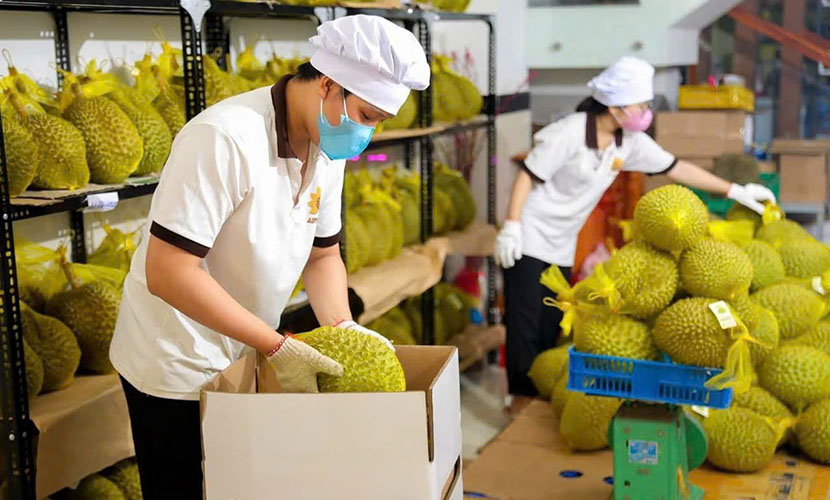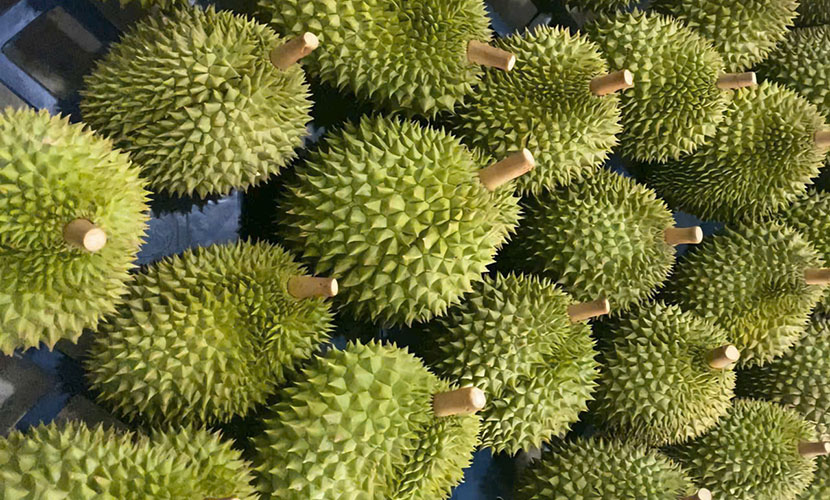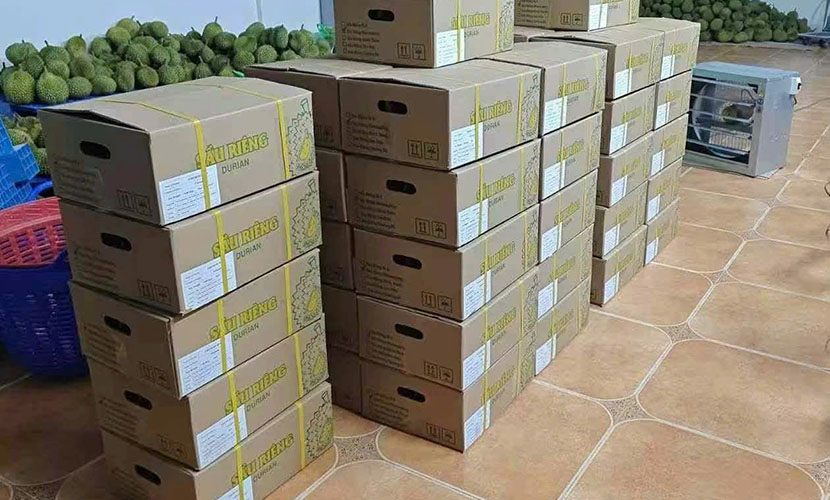
Over the past 10 days, nearly 2,000 containers of Vietnamese durian exports have been stuck at border gates and warehouses. The primary reason was the temporary suspension of testing services. This situation has put businesses at risk of hundreds of billions of VND in losses.
Mr. Trung, an expert, said the congestion began on October eleventh. At that time, laboratories responsible for testing chemical residue in Vietnamese durian exports stopped accepting new samples. They have also yet to release results for previously submitted batches. As a result, Vietnam’s exporters were unable to obtain the mandatory safety certificates required for export.

Vietnamese durian exports
According to Mr. Trung, only a few facilities currently have the capacity to test for both mandatory indicators, auramine O and cadmium. Unfortunately, most facilities can test for only one of them. This shortage has disrupted testing operations, which have failed to keep pace with the peak harvest season. As a result, the entire Dak Lak durian supply chain has stalled.
Nearly 2,000 containers of Vietnamese durian exports are now stuck in warehouses, processing plants, and at border areas. Some batches have been stranded for 10–15 days, facing risks of spoilage, cracked shells, and quality deterioration. The price of grade-A durians in warehouses has dropped from over 100,000 to around 80,000 VND per kilogram.
The suspension of testing has not only caused major losses for businesses but also forced factories to stop purchasing durians. This situation has driven prices down sharply for local farmers. Thousands of tons of ripe durians remain unsold, while growers continue to bear costs for care, transportation, and storage.

Fresh durian from Vietnam
In response to the situation, the Dak Lak Durian Association submitted a petition to urge the government to intervene and restore testing operations. The association proposed establishing a “fast-track” mechanism for export samples during the peak season. It also suggested temporarily authorizing qualified local facilities to conduct testing to ease the burden on central laboratories.
On October 24th, the government held a meeting with designated laboratories and relevant agencies to resolve the bottleneck. Later that evening, some facilities began releasing results for previously delayed shipments, allowing part of the backlog to clear. However, the acceptance of new samples has yet to return to normal, and businesses are still awaiting detailed guidance.

Vietnamese durian factory
Although testing activities are gradually resuming, the durian export chain remains under significant pressure. Each day of delay could result in hundreds of tons of fruit spoiling and damage Vietnam’s reputation with import partners. According to Mr. Trung, temporary measures are urgently necessary to maintain testing operations during the peak season and prevent a recurrence of this situation.
In the first eight months of 2025, Vietnam exported about 451,000 tons of fresh durians worth $1.52 billion. This represented a decrease of 24% in volume and 25% in value compared to the same period last year. Frozen durian exports reached over 58,000 tons, valued at $265 million, up 67% in volume and 127% in value. The total export turnover stood at nearly $1.8 billion, down about 16% year-on-year.
The association said it is compiling data on business losses to propose government support policies. These recommendations aim not only to address immediate difficulties but also to establish a stable, long-term testing mechanism for the durian industry. This sector is a key pillar of Vietnam’s agricultural exports.
Vietnamese source: https://vnexpress.net/gan-2-000-container-sau-rieng-xuat-khau-mac-ket-vi-tam-ngung-xet-nghiem-4955678.html
